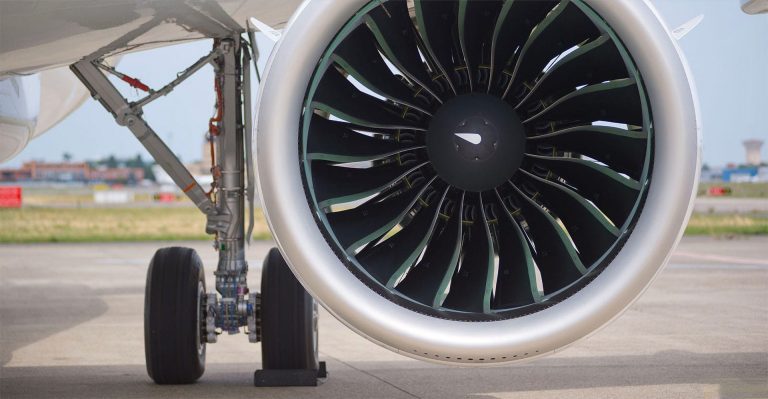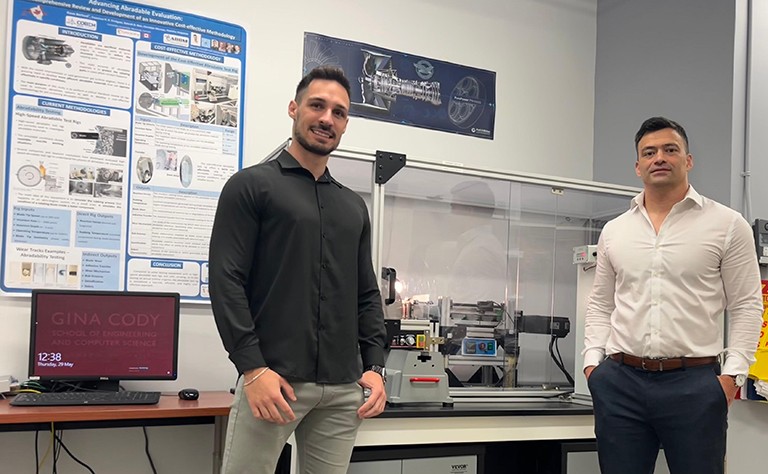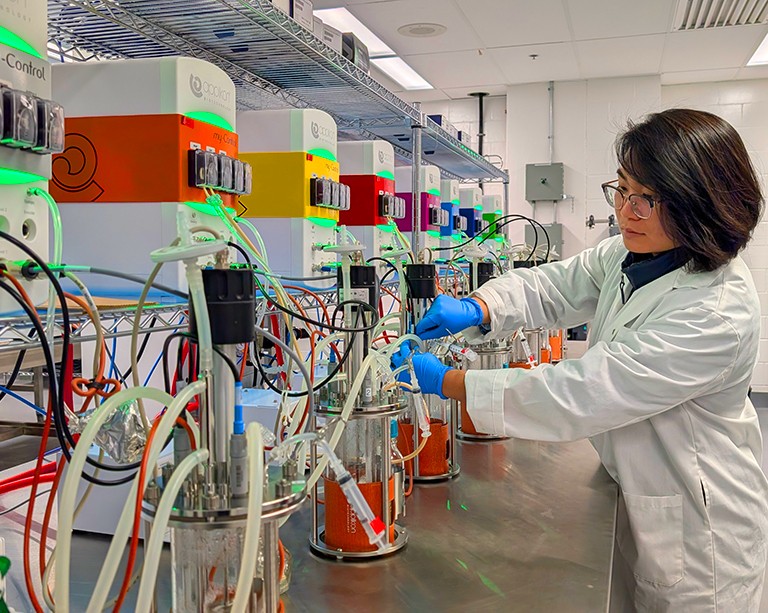Concordia and Pratt & Whitney push aerospace coatings forward

A new aerospace coating qualified at Concordia has already passed ground engine trials with Pratt & Whitney Canada. That kind of progress in under three years is a rare achievement in a field where research and validation cycles often span a decade.
PhD student Kauê Bertuol and his supervisor, Pantcho Stoyanov, are part of the research team that made this possible. The Gina Cody School of Engineering and Computer Science researchers developed a custom rig to test aerospace coatings more efficiently and at much lower cost than traditional methods.
The team works on protective coatings designed to wear slightly when engine blades make contact with the engine casing. This prevents damage and helps maintain a tight seal, improving efficiency. These materials, known as abradable coatings, come into play during turbulence or hard landings, when blade tips briefly touch the casing.
The Concordia-built rig simulates aircraft engine friction, letting the team pre-screen several materials before expensive full-scale engine trials. “With this rig, we can simulate engine blade contact in the lab and optimize new materials much faster,” says Bertuol, who designed and built the system as part of his doctoral research.
 “With this rig, we can simulate engine blade contact in the lab and optimize new materials much faster,” says Kauê Bertuol, pictured on the left with his supervisor, Pantcho Stoyanov.
“With this rig, we can simulate engine blade contact in the lab and optimize new materials much faster,” says Kauê Bertuol, pictured on the left with his supervisor, Pantcho Stoyanov.
Speeding up the innovation cycle
They focused on aluminium-silicon coatings, which are lightweight and commonly used in aerospace. They refined their testing method and explored different chemical blends to improve how coatings qualify for aerospace use.
Their work is part of ACTec, a $1.8 million project funded by the Consortium for Research and Innovation in Aerospace in Québec (CRIAQ). This Concordia and Pratt & Whitney Canada–led project is working to improve aircraft engine compressors, the parts that pressurize air before ignition.
“This kind of progress is encouraging,” Stoyanov says. “It shows what’s possible when academic research is closely aligned with industry needs.”
CRIAQ sees it as a standout example of academic-industry collaboration. “This project is a shining example of CRIAQ's unique model of collaborative research, stimulating technological innovation and corporate engagement to R&D,” says Guillaume Côté, CEO of the consortium. “The partnership between Concordia University, Polytechnique Montréal, Pratt & Whitney Canada and CRIAQ, which was put in place thanks to the Quebec aerospace strategy, demonstrates Quebec’s ability to reinforce its technological leadership in cutting-edge aerospace applications.”
Barry Barnett is associate director of research and technology at Pratt & Whitney Canada. “We were impressed by how quickly Concordia developed this test rig and used it to move promising new coatings through the early qualification stages,” Barnett shares. “It’s a good example of how targeted research partnerships can accelerate innovation and reduce risk.”
The work has already led to an invention disclosure, seven peer-reviewed papers and multiple conference presentations. The research team also includes PhD students Bruno Arendarchuck and Francisco Rivadeneira, along with postdoctoral researcher Rakesh Nair. They work alongside Christian Moreau, Canada Research Chair in Thermal Spray and Surface Engineering.
Read the related publications:
- “Design and Development of Cost-Effective Equipment for Tribological Evaluation of Thermally Sprayed Abradable Coatings.” Journal of Thermal Spray Technology, 2024.
- “Influence of hBN on the Abradable Performance of AlSi-based Coatings: Bridging the Gap Between Tribological Assessment and Abradability Testing.” Surface and Coatings Technology, 2024.
- “Effect of Mo and Cr on abradability and tribological performance of AlSi-based abradable coatings.” Wear, 2025.
Discover more about aerospace research at Concordia’s Gina Cody School of Engineering and Computer Science.




